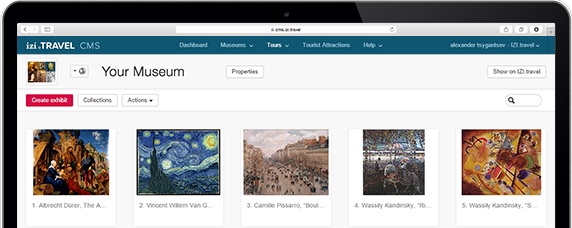Mansion of Mariya Yakunchikova (Prechistensky pereulok, Building 10)
Update Required To play the media you will need to either update your browser to a recent version or update your Flash plugin.
This residence on Prechistensky pereulok was built in 1899-1900 by the architect, William Walcott, who also worked on the Hotel Metropol. The residence is one of the key examples of Moscow Art Nouveau. William Walcott was a Russian architect of Scottish descent and a follower of the work of the British architect, Charles Mackintosh. The latter's work inspired Walcott to create this house, which is extremely restrained. There is even a certain parsimony in the details, which is typical of English Art Nouveau. Walcott's trademark feature, sculptural decorations with female heads, is present in the design of the mansion. The most striking building decorations are the majolica tiles, which were made in the workshop owned by Savva Mamontov, the famous Russian philanthropist and entrepreneur.
As the nineteenth century was coming to an end, a new principle quickly spread: a house should be constructed on a turnkey basis, as an independent work of art rather than because it had been commissioned by someone. Thus, in 1899, the young Moscow Trade and Building Society under the leadership of Yakov Rekk purchased some land that had once belonged to Prince Gagarin for the purpose of building luxury mansions. This site on Prechistensky pereulok was damaged by fire in 1812 (the Gagarin estate burnt down), and later had several owners. In 1900 the first mansions were built here: Buildings No. 6, 8 and 10.
The first owner of Building No. 10 on Prechistensky pereulok was Mariya Yakunchikova (whose maiden name was Mamontova), who was Savva Mamontov’s neice and the wife of Vladimir Yakunchikov. He was the half-brother of Mariya Vasilevna Yakunchikova, a talented Russian artist. The sister of Vladimir Yakunchikov, Natalya, was also an artist, and married to the painter, Vasily Polenov.
It is unsurprising that, with such sisters, Vladimir chose to marry a woman of such creative talent. Mariya Yakunchikova was fond of handicrafts and folk art and studied various types of applied art. In 1890, she, together with Yelizaveta Mamontova, Savva Mamontov’s wife, opened a "Shop of Russian Handicrafts" on Petrovka in Moscow. The store took orders for various artistic handicrafts. She created a number of embroidery and sewing workshops in Morshansk Uezd, Tver Province, and Tarusa. The workshops organized by Mariya Yakunchikova proved so successful that, in 1900, she was able to present the products of her workshops at the World Exhibition in Paris at the same Russian pavilion that was created based on the drawings by Alexander Golovin and Konstantin Korovin. The French government awarded her the Ordre des Palmes académiques. In his memoirs, Igor Grabar described Mariya Yakunchikova as a "talented woman versed in art and who knew how to distinguish the genuine from the false, the serious from the vulgar."
As the nineteenth century was coming to an end, a new principle quickly spread: a house should be constructed on a turnkey basis, as an independent work of art rather than because it had been commissioned by someone. Thus, in 1899, the young Moscow Trade and Building Society under the leadership of Yakov Rekk purchased some land that had once belonged to Prince Gagarin for the purpose of building luxury mansions. This site on Prechistensky pereulok was damaged by fire in 1812 (the Gagarin estate burnt down), and later had several owners. In 1900 the first mansions were built here: Buildings No. 6, 8 and 10.
The first owner of Building No. 10 on Prechistensky pereulok was Mariya Yakunchikova (whose maiden name was Mamontova), who was Savva Mamontov’s neice and the wife of Vladimir Yakunchikov. He was the half-brother of Mariya Vasilevna Yakunchikova, a talented Russian artist. The sister of Vladimir Yakunchikov, Natalya, was also an artist, and married to the painter, Vasily Polenov.
It is unsurprising that, with such sisters, Vladimir chose to marry a woman of such creative talent. Mariya Yakunchikova was fond of handicrafts and folk art and studied various types of applied art. In 1890, she, together with Yelizaveta Mamontova, Savva Mamontov’s wife, opened a "Shop of Russian Handicrafts" on Petrovka in Moscow. The store took orders for various artistic handicrafts. She created a number of embroidery and sewing workshops in Morshansk Uezd, Tver Province, and Tarusa. The workshops organized by Mariya Yakunchikova proved so successful that, in 1900, she was able to present the products of her workshops at the World Exhibition in Paris at the same Russian pavilion that was created based on the drawings by Alexander Golovin and Konstantin Korovin. The French government awarded her the Ordre des Palmes académiques. In his memoirs, Igor Grabar described Mariya Yakunchikova as a "talented woman versed in art and who knew how to distinguish the genuine from the false, the serious from the vulgar."
Scarica l'app gratuita izi.TRAVEL
Crea i tuoi audio tour!
L'uso del sistema e l'app di guida per dispositivi mobili sono gratuiti


